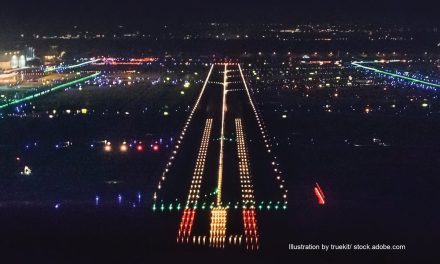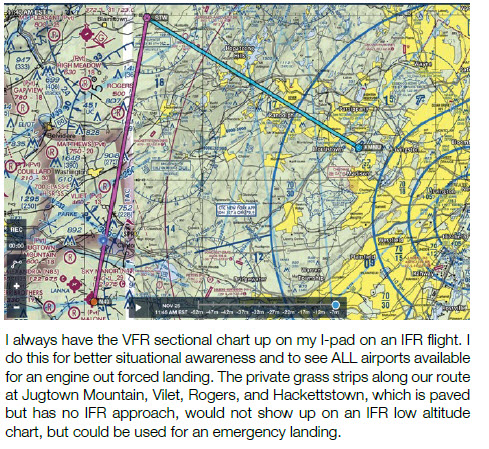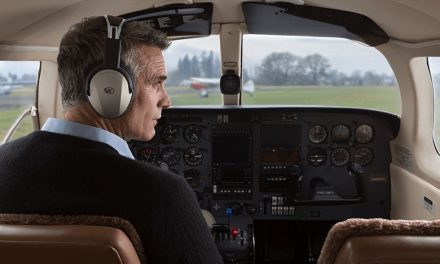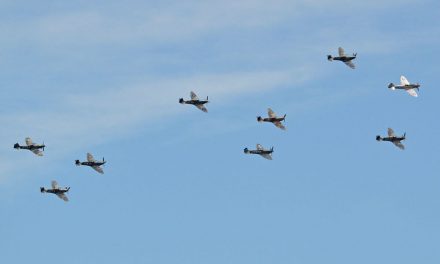The Land of the Free…and the Home of Restricted Airspace!
A Look at Four of America’s Most-Restricted Fly Zones
By Floyd Allen
In the heart of every American beats the nearly uncontrollable urge to be independent. Whether biting at the bit to be out on our own at age eighteen, or struggling tenaciously to continue to fend for ourselves at 88, Americans want to do what they want to do—when they want to do it.
For pilots, there is, perhaps, nothing that thwarts that spirit of independence more than restricted airspace. Of course, in the interest of security and posterity, many of the areas we hold most sacred as Americans have a good deal of that restricted airspace around them. Here, we’ll take a closer look at four of the most sacred and heavily guarded.
- New York City – “Contrary to popular belief, most of the things you might want to fly over in New York City to photograph have no flight restrictions per se,” shared a recently retired employee at the Kennedy Tower in Jamaica, Queens, New York City. “Of course, you’re expected to maintain the 1000 ft. level over buildings and observe other standard flight regulations,” he added. “However, there are times when TFRs (Temporary Flight Restrictions) are in effect and, as a result, it’s important to check your flight plan before proceeding.”
- Washington D.C. – Traveling a little further south you’ll find that there is some very specific restricted airspace as you approach Washington D.C. As an FAA spokesperson explained, “In the Washington area there are actually three levels of airspace: Prohibited, FRZ, and SFA.
Prohibited areas are, basically, the airspace over the White House (P-56A) and Number One Observatory Circle (P-56B), home of the Vice President. To envision the other two levels, imagine two concentric circles around Ronald Reagan Washington National Airport (aka National Airport). The FRZ (pronounced “freeze”) or Flight Restricted Zone, is the area with a radius of ten nautical miles from the airport. The final level, SFA (Special Flights Area), is within a thirty nautical mile radius of the airport.
According to our experts, most of the National Monuments we think of as being in Washington are in the FRZ. To fly in that area you need to apply in advance and get permission to do so. Plus, you typically need to have a “purpose” for being there—examples include being a part of a TV/movie production crew or a survey team, among others. As you can imagine, very seldom is a “general request” approved, and, as a rule, our expert advised: “If you’re in any Special Flights Area you need to be a squawkin’ and a talkin’.”
- Kennedy Space Center – Continuing south from D.C, you come to what may be the most “exciting” air space in all the land—the Kennedy Space Center/Cape Canaveral. As Bob Curry, certified instructor for Raethon in Orlando, Florida, shared, “When you come to this area, there are two restricted areas you need to be aware of: restricted area R-2932 and restricted area R-2934.”
R-2932 is the space shuttle landing area, and it’s always “hot” to 5000 ft. If the latter, R-2934, is in use for the space program you are not allowed to go near the Space Center. The tower for the shuttle runway is open 8-5, Monday thru Friday, but closed on weekends and all federal holidays when it reverts to Class G airspace. Whether the tower is open or closed, you must make pre-arrangements to touch down. However, it’s okay (and fun) just to fly in low and look things over a bit. “You will learn that the tower is flyer-friendly and gives a great deal of great advice,” said Curry. He went on to say that one of the really neat attractions is off to the west of Runway One Five. There you will find a lunarscape that was created to give prospective astronauts a feel for what they might encounter if they should actually reach the moon. “Something else that’s kind of fun is to fly along Port Orlando where all the ships are,” he added. If you choose to do this, Curry advised that you be sure to stay on the south side.
According to Ron Feile, Lead Air Traffic Controller for URS Corporation, a contractor to NASA that oversees the shuttle landing runway, “When it comes to flying at the Space Center, there are actually three aspects to be considered: the historic, the present, and the future.”
As most Americans know, the Center has a long and storied history. During its heyday, the Center had a team of air controllers funded by the US Air Force while the space shuttle program was in existence. On April 1, 2013 the airspace in the area was de-activated, but during the shuttle program era, both R-2932 and R-2934 were continually “hot.” Also during that time, military radar handled the eastern region. The area was specially constructed for the purpose it was to serve. The actual runway is 15,000 feet long, but an additional 1,000-foot, weight-bearing capacity overrun on each end, extends it to 17,000 total feet. The main function of the area was to handle launches and shuttle returns. “At that time, we were training shuttle flyers with a craft that had a yoke on the right side and a joy stick on the left,” Feile added.
During the latter part of the shuttle program the area was dedicated to the International Space Station (ISS). As a result, there was a constant influx of craft coming to drop off materials for the construction of the ISS. In fact, a portion of the Hubbell Telescope also departed from there.
Today, the Kennedy Space Center has agreements with several racing series – Grand Prix, NASCAR, and Indy – that use the runway as a testing ground of sorts. “The 17,000-foot flat straightaway allows them to do some excellent high-speed race testing,” said Feile. “In fact, they can do two run-ups before they have to turn around and change direction!”
As for the future of the Center, it’s currently evolving into a more commercial entity, though several deep space programs are planned and they still handle transitioning astronauts. In October they plan to launch the new Orion five-person capsule for crew and cargo transport to the ISS. They also figure to be a major part of the “asteroid capturing” program.
- White Sands Missile Range – Jumping cross-country from Florida to New Mexico, White Sands is one of the most restricted flight areas in the country. “While we may not have quite as exciting of a history as Cape Canaveral, the White Sands area can be more than a little exciting too,” claims Mike Ryan, FAA Air Traffic Control Specialist out of Roswell, New Mexico. “Especially if you inadvertently try flying over it!”
“Exciting” might be a big understatement! The reason—there’s a great deal of “live fire” taking place as drone aircraft are routinely shot out of the sky. Occasionally, some flights are allowed to fly through, but only at a height of 24,000 feet or higher and typically only on weekends. “For that to take place, the Roswell Tower would call Albuquerque Central who would then clear it with Cherokee—the entity that controls the White Sands Range for the flight missions from Holloman Air Force Base,” Ryan explained. “If one was to try to fly through without authorization they can expect to be intercepted by F-16s!” He also explained that if you do want to fly in that general area you should plan on going to Alamogordo, New Mexico, located to the east.
The White Sands Missile Range Museum contains exhibits related to the development and testing of missiles and rockets, along with a display on the first explosion of an atomic bomb at the Trinity Site on July 16, 1945. The missile park contains numerous examples of early test rockets and missiles, as well as some of those currently in service. Since 1945 when the range was established, more than 42,000 missile and rocket firings have taken place here. WSMR is also a backup landing site for the space shuttle and the Columbia landed here in 1982.
Our experts all agreed that if you intend to go flying to see historic America this July 4th that you make sure you are acutely aware of restricted airspace in the areas you are flying. After all, at least in the White Sands area, we don’t want you and your craft to be part of the “bombs bursting in air!”





